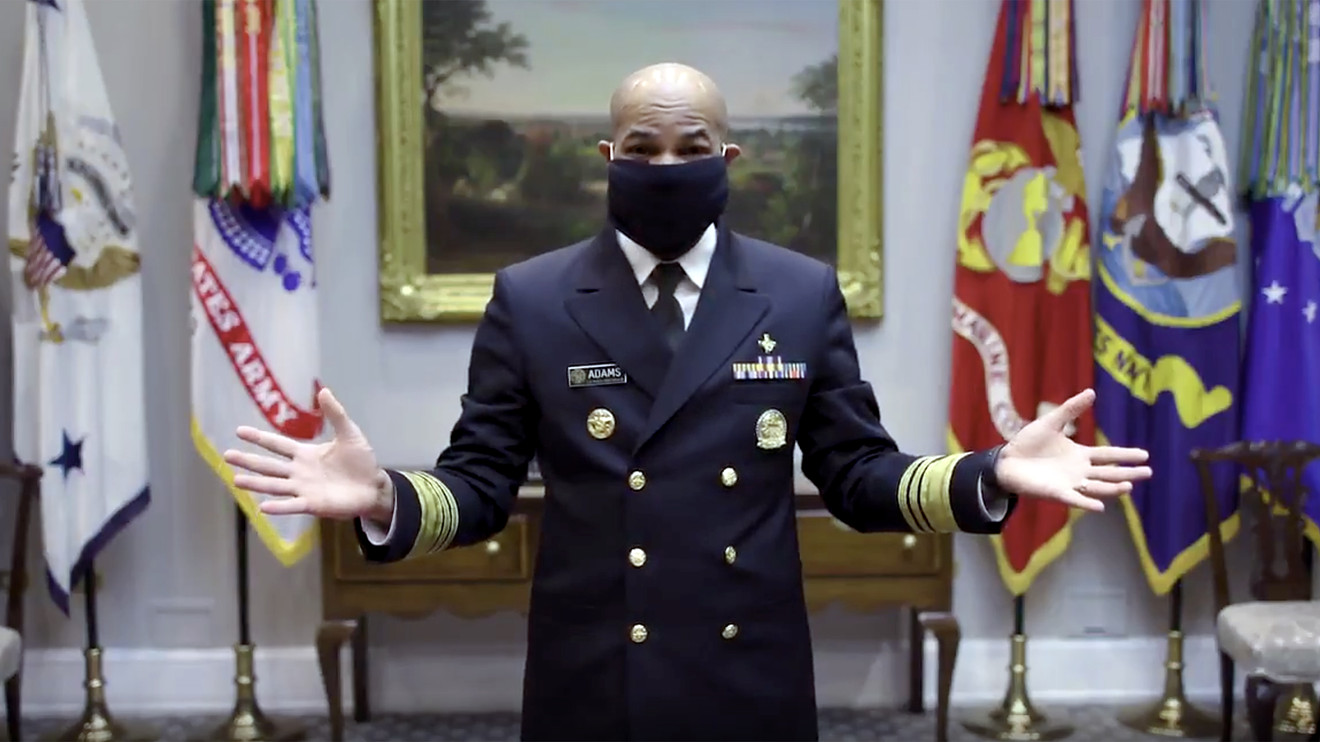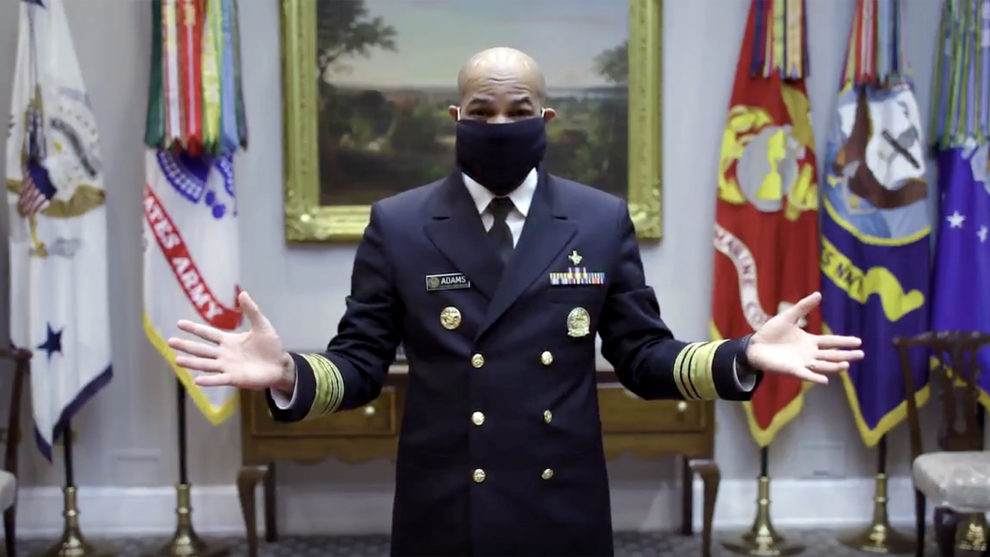
It’s official — the U.S. Centers for Disease Control and Prevention recommends that all Americans wear a face cloth covering in public settings.
To preserve the supply of N95 and surgical masks for health care workers treating patients who have contracted COVID-19, the disease caused by coronavirus, the CDC has advised all Americans to instead wear “cloth face coverings in public settings where other social distancing measures are difficult to maintain.” Examples include grocery stores and pharmacies, the CDC says.
“ Scott Segal, chairman of anesthesiology at Wake Forest Baptist Health, N.C., studies the effectiveness of materials used to make homemade masks. He said U.S. Surgeon General Jerome Adams visited the facility one month ago. ”
But some of the materials you can use to make do-it-yourself face masks offer more protection than others. The CDC’s recommendation comes following numerous reports on transmission of COVID-19 from asymptomatic people.
These people don’t have fevers, coughs or runny noses or other common symptoms of COVID-19, and may be unknowingly spreading the virus to others, according to one study published earlier this month, which examined infections of residents of a nursing home in King County, Wash.
Because seemingly healthy people could end up infecting someone, public-health officials are now recommending that all Americans wear a face covering in public, but still advise against buying surgical N95 masks, as they say there is a shortage of these medical-grade masks in hospitals, and they’re needed by health-care workers who are putting their lives on the line.
On Feb. 29, U.S. Surgeon General Jerome Adams said he was against members of the public wearing face masks, and tweeted, “Seriously people- STOP BUYING MASKS! They are NOT effective in preventing general public from catching #Coronavirus, but if health-care providers can’t get them to care for sick patients, it puts them and our communities at risk!” On April 4, however, Adams shared a video on Twitter TWTR, +3.69% explaining how to make your own mask:
Adams suggested using items you could find around the house like “an old scarf, a bandanna or a hand towel… or an old T-shirt,” to make a mask. He folded the material over several times to make the improvised face mask as least porous as possible; Adams also added two rubber bands to hang it in place around his ears.
“I agree with the Surgeon General that covering mouth and nose is a good thing to do,” said Scott Segal, chairman of anesthesiology at Wake Forest Baptist Health, a North Carolina medical center, who launched a research project to study the effectiveness of materials used to make homemade masks. He added, “Some cotton fabrics filter less than 25% of air particles.”
However, Segal added, “Our work suggests that, if you want to protect people, some materials for face masks are better than others.” Segal said that he’s already written to the Surgeon General to “make him informed of what we’ve found.” Segal said the U.S. Surgeon General visited Wake Forest Baptist Health to discuss the opioid crisis, but this was before the COVID-19 pandemic.
So what materials do come out on top?
Of the 13 different homemade cloth surgical masks Segal studied in partnership with the Wake Forest Institute for Regenerative Medicine, “quilters’ cotton” ranked highest.
The study used instruments that detected a fabric’s effectiveness at filtering small particles. Quilters’ cotton, a tightly woven high-thread-count fabric, can filter out some 70%-79% of small particles including viruses, according to Segal’s research, which has not been submitted for publication and has not been peer-reviewed. That’s better than surgical masks, which Segal said filter out only 65% of particles. (N95 masks offer the highest level of protection — filtering out 95% of air particles.)
Segal’s team has not yet tested cotton bed sheets, which one epidemiologist recommended for crafting a DIY mask, or balaclavas (face coverings similar to ski masks) which are typically made from materials similar to what’s used in active wear.
“ ‘If you see light between fibers it’s not a good filter. Even on dark fabrics if you hold them up to light or to the sun you will still be able to see if the fabric’s fibers will show or not.’ ”
One way to find out on your own if a material is a good candidate for a mask is to do what Segal refers to as “the light test.” Take the material and “hold it up to a bright light,” Segal said. “If you see light between fibers it’s not a good filter. Even on dark fabrics if you hold them up to light or to the sun you will still be able to see if the fabric’s fibers will show or not.”
After a material passes the light test, the next factor to keep in mind is the fabric’s breathability. One way to test that out, Segal recommended, is to “hold up the material up to your nose and mouth and say ‘If this was tightly adhered to my face would I be able to make it through a trip to the supermarket?’”
Vacuum cleaner bags ranked higher than tea towels, but they’re considerably more difficult to breathe through, the Stanford research showed. If you’re unable to find a material in your home that passes the light test, you shouldn’t give up on making a mask. “Anything is better than nothing,” Segal said. In other words, it would be better to go to the supermarket wearing a mask made from a T-shirt as opposed to not wearing any face covering.
Segal and his research team tested a thick “jersey” cotton similar to what’s used for “stretchy shirt” and it performed well, he said. The team plans to test out more common “household” fabrics in the next round, but obtaining more material to test could take a while because “the fabric stores aren’t open much now,” Segal noted.
Tea towels are better to use for a mask than T-shirts or pillowcases, according to research published by the Stanford Anesthesia Informatics and Media Lab.
“No mask is as good as social distancing,” Segal said. “I’m worried that once people start wearing masks they might relax social distancing.”Deborah Birx, a public health expert on the White House’s coronavirus response team, expressed similar concerns during a briefing last week. “The most important thing is the social distancing and washing your hands, and we don’t want people to get an artificial sense of protection because they’re behind a mask.”









